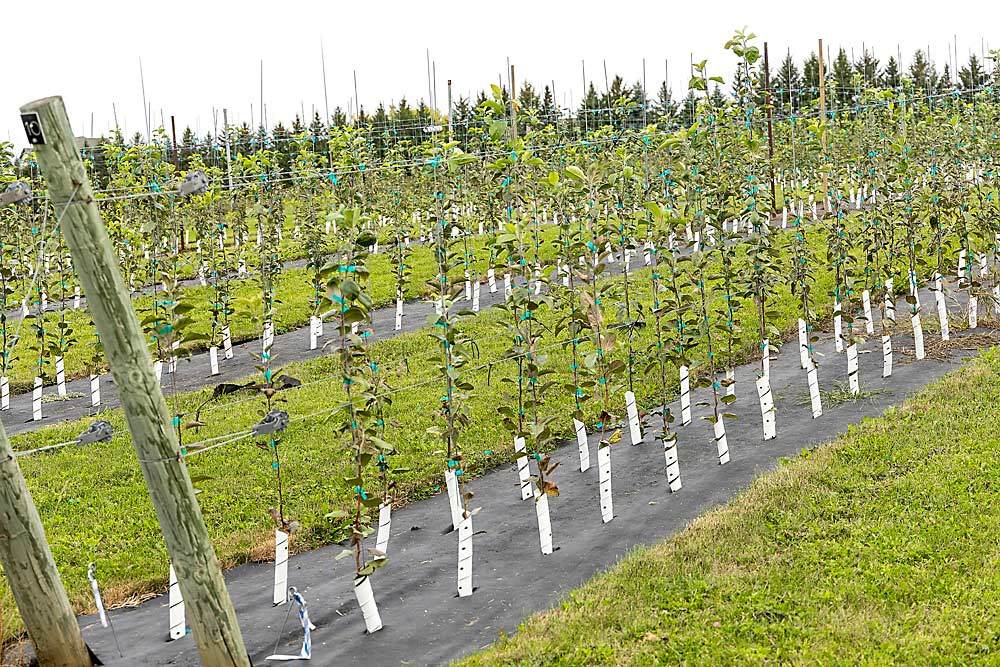
Since the University of Minnesota released it in 1991, Honeycrisp has become the high bar by which other apples are measured. It’s now the third most popular variety in the United States, consistently fetching the highest retail prices, and its extraordinary texture has changed consumer expectations of what an apple should be — a shift that altered the trajectory of apple breeding.
Breeding programs across the country are now awash with Honeycrisp DNA, and breeders have spent much of the past couple of decades seeking new varieties that retain Honeycrisp’s strengths while shedding weaknesses such as susceptibility to bitter pit, fire blight and soft scald. Washington State University’s latest release, WA 38, marketed as Cosmic Crisp, includes Honeycrisp in its genetic line.
“Honeycrisp as a parent or grandparent is present in the majority of my advanced selections,” said Kate Evans, a WSU apple breeder. “It has raised the bar, particularly in terms of texture. Of course, many of its offspring also inherit the more challenging traits of Honeycrisp, so thorough evaluation and selection is critical.”
“Lucky break”
Honeycrisp was born in Minnesota, a state dotted with small retail orchards and one of the coldest climates where apples can be grown commercially. American settlers in the 1800s found that most of the cultivars they brought with them weren’t hardy enough to survive the long, frigid winters. To this day, industry mainstays such as Gala, Fuji, Braeburn, Granny Smith, Pink Lady or Red and Golden Delicious can’t survive there, said University of Minnesota apple breeder David Bedford.
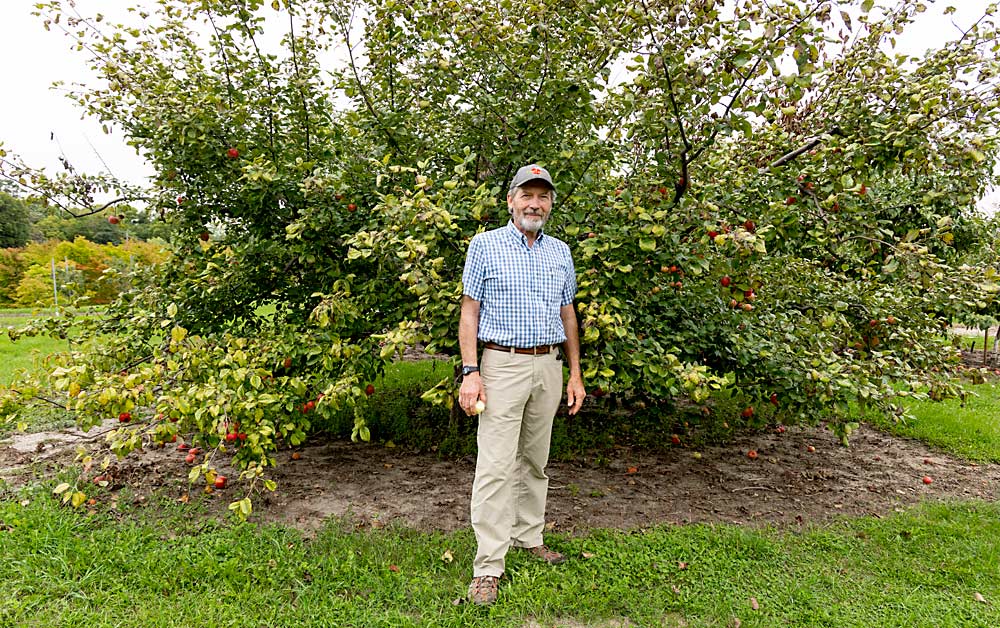
The few apples that could survive are those that bequeathed Honeycrisp its cold hardiness and unique texture (see “Uncovering Honeycrisp’s cold-hardy ancestry,” below), said Jim Luby, director of UMN’s fruit breeding program.
Minnesota got a “lucky break” in the mid-1800s, when settler Peter Gideon discovered that one of his apple trees had lived through the winter. Gideon named the apple Wealthy and released it in 1868. Wealthy was cold-hardy and a good eating apple — “the Honeycrisp of its time,” Bedford said. Its DNA resides in many UMN releases.
Based on the popularity of Wealthy, a group of growers banded together and secured funding from the state legislature to create an apple breeding program affiliated with the University of Minnesota. Gideon superintended that initial program, which lasted about a decade, Bedford said.
UMN’s current fruit breeding program started in 1908. The program has released its share of berries, pears and stone fruit over the years, but breeders mainly focus on apples and grapes today (see “Grapes surviving the cold”).
The university introduced its first apple, Minnehaha, in 1920. Minnehaha is “commercially extinct” now, but the next release, Haralson, was the most popular apple in the state for the next several decades and remains a favorite of apple lovers. Haralson never spread far beyond Minnesota, however, Bedford said.
Due to misplaced records, it’s difficult to confirm who made the original Honeycrisp cross in 1960. The variety didn’t get much notice for the next couple of decades, until Bedford and Luby joined UMN. Bedford still remembers the first time he bit into a Honeycrisp. He was new to apple breeding at the time, and its texture was so extraordinarily crisp that he didn’t quite know what to make of it.
When they saw consumer reactions, however, it didn’t take Bedford and Luby long to figure out they had a special apple on their hands. It helped that they released it first in Minnesota’s Twin Cities, where consumers like produce and are willing to pay for it, Luby said.
In the early 1990s, there were no organized marketing campaigns behind an apple’s release, and proprietary varieties were merely a gleam in the industry’s eye. Honeycrisp’s growth was a grassroots phenomenon. Anybody could grow it, and they did. Plantings started in Minnesota and spread to Michigan and the East Coast. When the Pacific Northwest joined in, volumes really went up, Bedford said.
When UMN released Honeycrisp, there were no other commercial apples with the word “crisp” in their names. By Bedford’s count, there are now at least 13.
From Minnesota to everywhere
UMN has released half a dozen apples since Honeycrisp. Each new release is widely anticipated. Some have been proprietary. The release of Minneiska (marketed as SweeTango) as a managed variety led to controversy and a legal dispute between the university and a group of Minnesota growers.
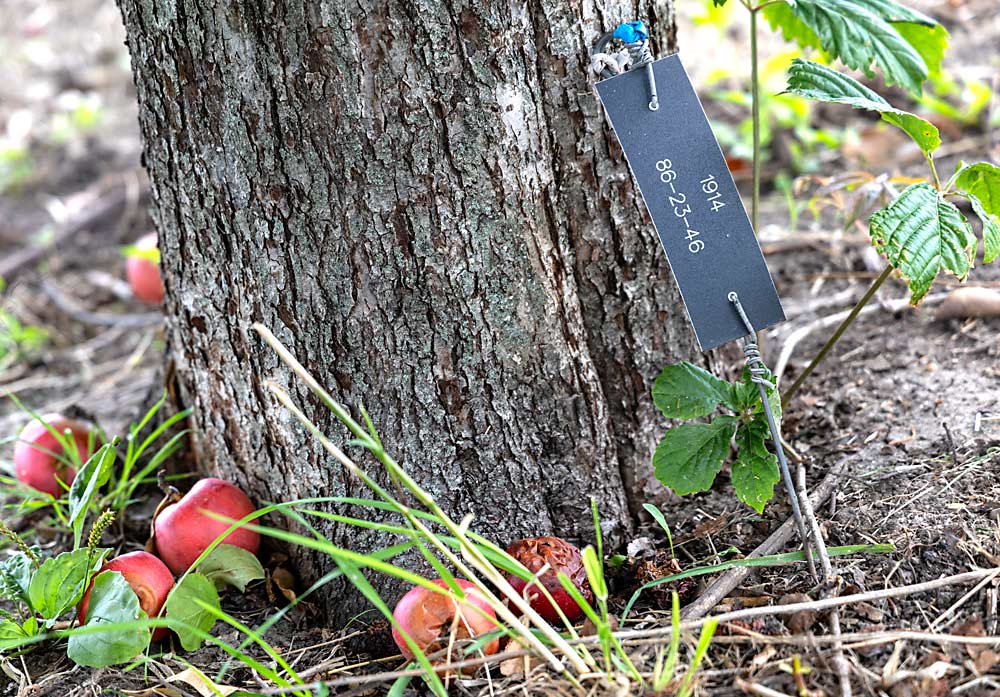
Minnesota grower Fred Wescott said larger companies from other states compete with Minnesota’s small industry for access to UMN varieties now, forcing the university to juggle between maximizing the value of its proprietary products and serving the interests of Minnesota growers.
Luby said the university learned from the SweeTango controversy, and Minnesota growers have had full access to all subsequent releases. Trying to balance those interests resulted in the 2017 release of MN 55 being marketed as First Kiss by Minnesota growers but otherwise marketed as Rave by license holder Stemilt Growers of Washington.
The most recent release, Triumph, should be a good candidate for direct market and organic producers, thanks to its scab resistance and good shelf life.
Bedford said they intend for every cross to produce hardy trees that can survive Minnesota’s climate. They also seek traits such as the right texture and flavor, ease of growth, storability and appearance no matter where the apples will be grown.
“We’re Minnesotans at heart, but fortunately we have genetic material that’s good enough for the rest of the world, too,” Bedford said.
Minnesota grower John Jacobson said his state wouldn’t have much of an apple industry without the UMN breeding program. His own orchard would be relegated to “Macs and Cortlands,” he said with a laugh, if it wasn’t for UMN varieties.
“They’ve really hit some home runs,” Jacobson said.
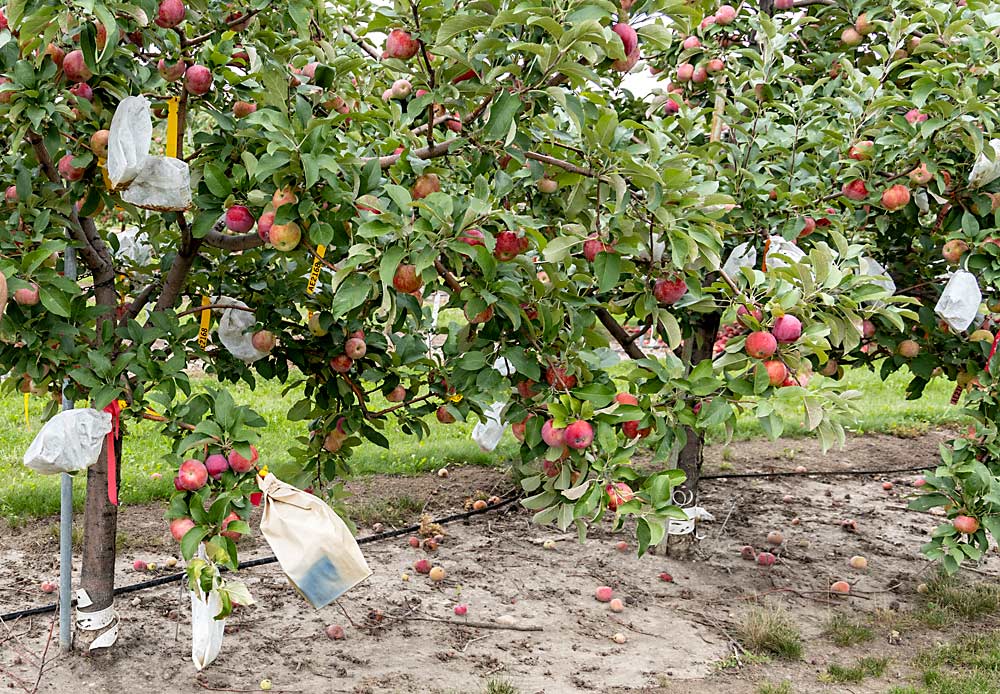
“World-class” genetics
Bedford’s home base is UMN’s Horticultural Research Center in Excelsior, on the western outskirts of Minneapolis. It’s a short walk from his office to most of the breeding plots, where he spends much of his time tasting and spitting apples, always seeking a memorable eating experience, which comes down to texture and flavor, he said.
“Once you’ve experienced that Honeycrisp texture, it’s hard to go back,” Bedford said. “We won’t select anything that doesn’t approximate that texture.”
Many apple flavors remain to be explored. The program has apples that taste like “cherry Life Savers,” spicy cloves and anise. There’s no such thing as a perfect apple, but Bedford said he hopes more memorable eating experiences are within reach.
Getting there requires ruthless culling. Bedford started with a “three strikes and you’re out” policy for seedlings, but that turned out to be too generous. He went down to two strikes, then one.
“What I found out in the first 20 years is that giving an apple another year doesn’t help,” he said. “If you don’t have it, you don’t have it.”
Bedford said about one in 10,000 seedlings makes it all the way from initial cross to commercial release.
“There’s no point in introducing more mediocre apples into the market,” he said. “Finding a ‘not-so-bad’ apple is not what we’re looking for. We want the ‘wow’ factor.”
Now 70, Bedford has been a UMN apple breeder for 43 years. He handed off some of his typical breeding duties to research center staff this year, a first for him. He knows a transition is on the horizon, but he’s optimistic about the future of the program. Any successor will have a “world-class” array of genetic material to work with, he said. •
—by Matt Milkovich
Uncovering Honeycrisp’s cold-hardy ancestry
Honeycrisp’s unusual texture and cold hardiness are the products of a unique ancestry. According to researchers, the European cultivars that survived harsh northern climes and became the genetic base of the University of Minnesota’s apple breeding program have a different lineage than the cultivars that kindled other breeding programs.
Fragmentary documentation from the early days of UMN’s breeding program left the ancestries of many of its varieties up for interpretation. To remedy that, researcher Nick Howard has spent the past several years leading an effort to uncover the pedigrees of every UMN cultivar, including Honeycrisp, using new genetic techniques. There’s still a lot to learn, but they’ve made some revealing discoveries.
In 2017, Howard, a UMN doctoral student at the time, announced the confirmation of Honeycrisp’s true parents: Keepsake and MN 1627, an unreleased UMN selection that is no longer available. For a long time, UMN breeders assumed Honeycrisp was the child of Macoun and Honeygold. But that assumption was based on a record-keeping error made decades before Honeycrisp was released.
UMN fruit breeders Jim Luby, David Bedford and John Tillman recently co-authored a research paper with Howard, who’s now an apple breeder at Fresh Forward Breeding and Marketing in the Netherlands. The paper, published in HortScience in February, announced the results of their efforts to document the pedigrees of every UMN apple. Sifting through thousands of DNA markers, the researchers traced the genetic roots of UMN varieties through the early days of the breeding program, and back even further to their European ancestors. They were able to confirm, correct or complete the parentage of 16 of the 21 cultivars introduced before Honeycrisp, according to the paper.
The researchers found two ubiquitous ancestors in Honeycrisp’s family tree. French cultivar Reinette Franche is an ancestor of several UMN cultivars, Honeycrisp included. It’s also an ancestor of Gala and Golden Delicious, according to the paper.
The ancestor of “overwhelming importance,” however, is Duchess of Oldenburg (also known as Borowitsky). Introduced to Minnesota in the 1800s, Duchess of Oldenburg is related to 27 of UMN’s 28 apple releases, according to the paper.
Luby, director of UMN’s fruit breeding program, said Duchess of Oldenburg was not a common ancestor in most apple breeding lines, with the exception of Minnesota and Canada.
Howard said Duchess of Oldenburg, which probably originated in Poland or Russia, most likely passed its exceptional cold hardiness genes on to Honeycrisp and most other UMN cultivars. It’s also one of the varieties that probably contributed to Honeycrisp’s crisp texture, though he doesn’t think there’s a direct genetic link between the two traits.
—M. Milkovich

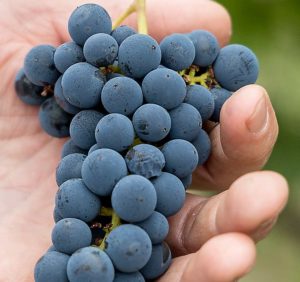

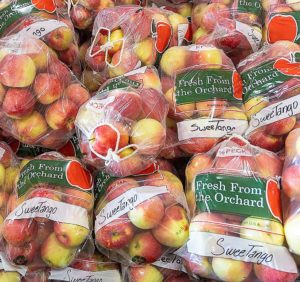
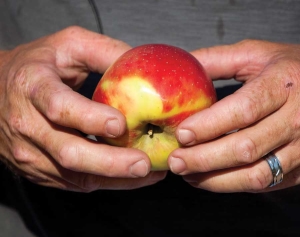





Leave A Comment